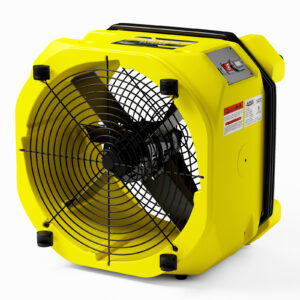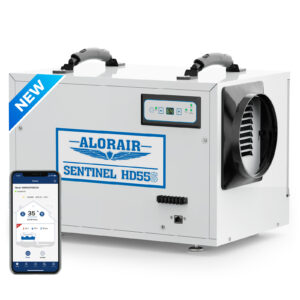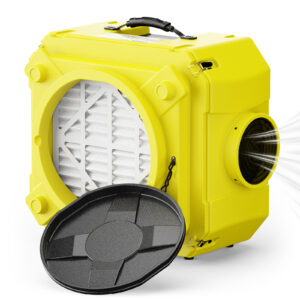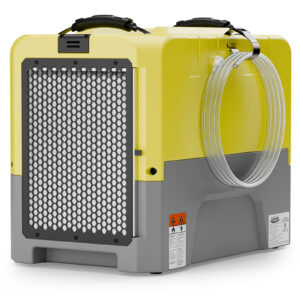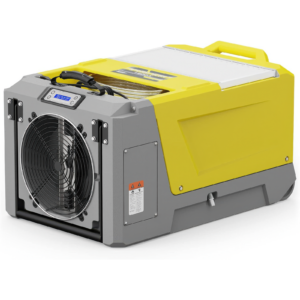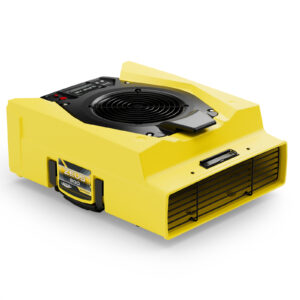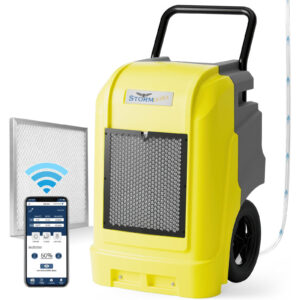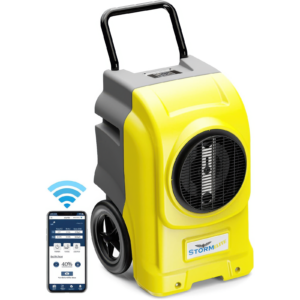Despite its sunny skies and ocean views, Sydney quietly ranks among Australia’s wettest cities. On many mornings, the air is like soup. Your skin becomes clammy. Mysterious black spots grow on the walls. And, no matter how often you clean, that ‘damp’ feeling lingers.
But why exactly is it so damp in here? And more importantly, what can you do before mold takes over your walls and lungs? This article gives you the answers.
Is Sydney Really That Humid?

Yes. And the numbers don’t lie.
Sydney’s average morning relative humidity often pushes past 80%, especially from December to March. In the afternoons, it usually hovers around 60–65%. Compare that to Melbourne’s drier average of 50–55%, and the difference becomes instantly noticeable.
But it’s not just the raw humidity—Sydney’s “sticky” feeling comes from a deadly combo: humid sea air, warm summer temps, and regular rainfall. Add in easterly winds bringing in ocean moisture, and you’ve got a climate that wraps your skin like a damp towel.
Why Does It Feel So Damp Inside My Home?
If your home smells musty, clothes dry very slowly, and the air feels damp even with the windows open – you’re not imagining it. That clammy, heavy feeling in the air? That’s indoor humidity, and in Sydney homes, it often lingers for long periods of time. Here’s why.
High Built-In Humidity
Sydney sits right next to the Pacific Ocean. That sounds great on a postcard, but in real life, it means your home faces a constant flow of moist sea breezes. On most summer mornings, relative humidity is over 80%. By afternoon, it may drop slightly, but your house has soaked up moisture like a sponge.
Now compare that to Melbourne or Adelaide, where summer humidity often hovers just under 55%. What’s the difference? You feel it in the walls, in your sheets, and on your chest when you breathe.

No Ventilation
New apartments and townhouses are often sealed “for energy efficiency”. Great insulation. Not great for fresh air. No gaps, no drafts, no cross-breeze. Is it the steamy air from your morning shower? It has nowhere to go. Boiling water on the stove? will only exacerbate the problem.
Without constant airflow, your living space becomes a greenhouse. Moisture hangs in the air, settles on cold surfaces, and breeds mold in quiet corners.
Living with Lots of Water
Each person exhales around 300-500ml of water a day. Add in steamy showers, cooking, and drying clothes indoors, and you have a miniature weather system in your home.
A load of laundry drying on an indoor drying rack releases 2-3 litres of water into the air. Do this five times a week, and your walls will absorb 10-15 litres of moisture – just from your socks and sheets.
Even something as mundane as boiling a pot of pasta releases 1.5 litres of water in the process of preparing a meal.
Dampness Seeps in Easily
In older Sydney homes or those with poor floor drainage, groundwater can slowly seep upward into the walls and floors. This is called rising damp.
You won’t always see obvious signs. The walls may appear fine. But underneath, the brick or concrete soaks up moisture like a sponge. This leads to a constant feeling of cold underfoot, an unexplained musty smell, or paint bubbling or peeling for “no reason.”
Even worse, it raises the humidity level in the entire room, even when there isn’t an open window or a cooking pot in sight.
Related reading: How To Choose The Right Dehumidifier
What Problems Can High Humidity Cause in My House?
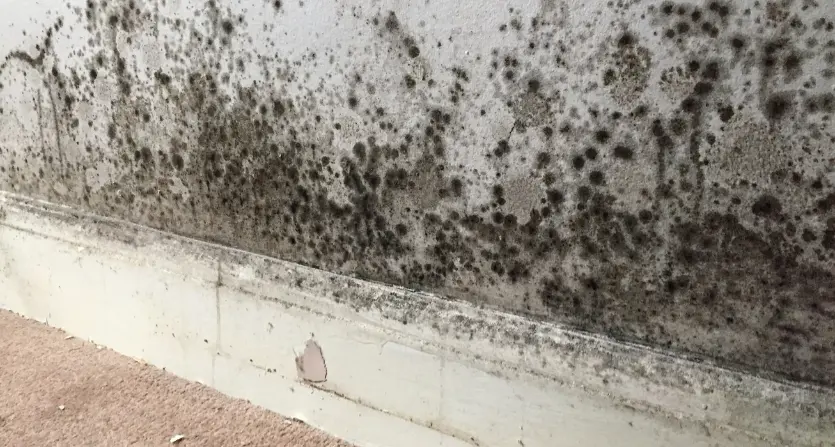
After 48 hours in a humid environment, mold will begin to multiply. In another week, mold can seep into fabrics, paint, and sheetrock. If you feel the air is humid and you see mold, it’s too late to prevent it. 2.
Your furniture and fabrics will quickly become dirty, and your closets will smell like an old basement. Bed linens never feel truly dry. Carpet edges are dark and slightly sticky no matter how many times you vacuum them.
This is what happens when your home absorbs too much moisture on a daily basis. Textiles and wood take longer to absorb water than you might think. Some materials (such as cotton, wool, and leather) can contain up to 27% of their weight in water and not even feel wet to the touch.
Yes, this isn’t just unpleasant. It can lead to skin irritation, worsening eczema, and dust mite allergies, especially if you sleep on it every night.
Your appliances and fixtures start to break down, and humidity doesn’t care how expensive your electronics are. The internal parts of laptops, coffee makers, air fryers, and washing machines all corrode faster in humid environments.
You’ll also see metal edges rust, kettles harden, and even power boards short out if the humidity is deep enough.
As boards swell, they can start to warp and buckle. Paint will curl, blister, and flake off in patches. Once moisture has invaded the painted surface, there is no way to undo it without a full refinish.
Humidity doesn’t just destroy things, it destroys your body. Living in a high-humidity environment can make asthma, sinusitis, eczema, and hay fever significantly worse. Rooms that feel “musty” are a haven for mold spores, bacteria, and dust mites.
Vulnerable groups, such as babies, the elderly, or anyone with allergies, are most affected. You may not notice the connection at first, but if someone in the house is coughing, wheezing or scratching constantly, check the humidity before checking the medicine cabinet.
How Can I Reduce Humidity Indoors in Sydney?
Ventilate Smart, Not Often
Open your windows early in the morning or after sunset when the humidity outside is below 60%. This is the best time to expel stale air without inhaling moisture.
On rainy or muggy afternoons, don’t open the windows. Breathing in wet air will only make the room more humid. This is where an air mover can help, especially in stuffy corners or windowless rooms. In high-humidity areas such as bathrooms and laundry rooms, these machines can extract humid air and speed up drying.
Use Exhaust Fans Carefully
Steamy in the shower? Cooking pasta? Drying clothes indoors? These are all water that goes directly into the air.
Use kitchen and bathroom exhaust fans during and 15-20 minutes after these activities. This will actually remove the steam, not just push it around.
Don’t have a built-in fan? Consider a portable air purifier with a centralized vent. It’s a great help when you can’t renovate but need to get air circulating as quickly as possible.
Use An Air Dehumidifier Where It Matters Most
Place a dehumidifier in a closed bedroom, laundry room, or windowless bathroom. Depending on the size of your home and the humidity level, you’ll need the best dehumidifier with a capacity of 10 to 30 liters of dehumidification per day. This is not an arbitrary figure but the amount of humidity an average home produces in a 24-hour period, especially in Sydney’s coastal suburbs.

Some of the best choices of air dehumidifiers on the Australian market today come equipped with automatic draining, HEPA filters, and built-in humidity regulators, so you can set the ideal humidity level and be on your way.
Tidy Up Your Room And Let The Walls Breathe
Moisture loves to hide, especially in narrow pantries, crowded closets or behind furniture that’s tightly packed against an outside wall.
Create breathing space. Pull large furniture 5 to 10 centimeters away from the walls. Don’t overstuff your closet. In areas of high humidity, leave closet doors open.



